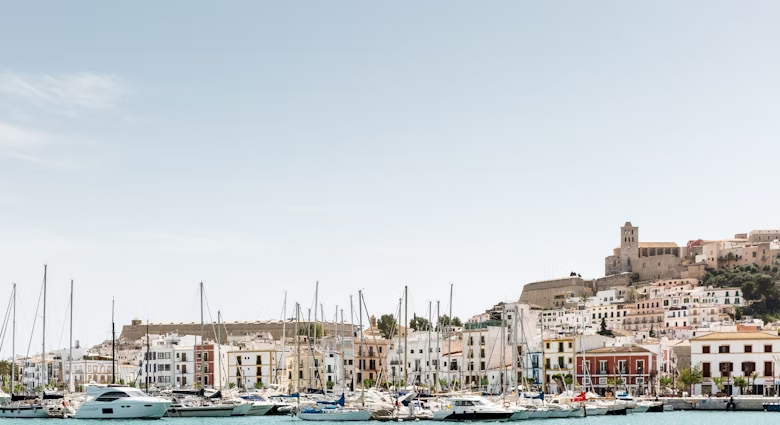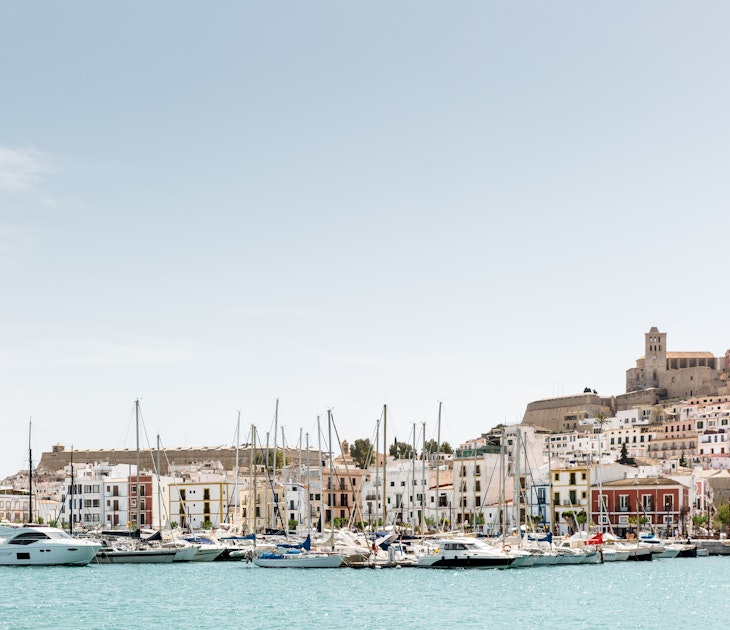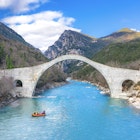
Getting around Crete is easy by boat, car, bus or bike
Jul 23, 2022 • 6 min read

Ferries link beaches and coastal towns all along Crete's southwest coast © Roberto Moiola / Sysaworld / Getty Images
Crete is far and away the largest Greek island, more than double the size of the closest runner-up (under-explored Evia) and nearly 100 times the size of Mykonos. Getting around this vast and mountainous island is like navigating a small country.
Many people – even those on extended holidays – choose to limit their explorations to one portion of the island, often picking either the east or the west. Fortunately, getting around Crete is easy, albeit sometimes time-consuming.
Covering 8336 sq km (3219 sq miles), Crete is laced with decent – if twisty – roads, plied by a busy network of buses. You can also rent a car, motorbike or scooter, which will give you the freedom to explore many more obscure – and rewarding! – corners of Crete.
There are taxis for local jaunts, and ferries connecting the idyllic beaches along the southwest coast, and intrepid cyclists will find much to challenge their skills in the mountains inland. Here are our top tips for getting around in Crete.
YouTube video player
Avoid hassles (and help the environment) by taking the bus
You can get almost anywhere in Crete by bus, and the island's coaches are modern and air-conditioned with frequent service on most routes. Two websites provide schedule and fare information: one is for western Crete, with services centered on the city of Hania, while the other covers services in central and eastern Crete, with services centered on the island's capital city, Iraklio.
Regular buses ply the major roads across Crete, stopping at villages and attractions along the way, and bus fares are cheap – the hourly service linking Hania and Iraklio costs less than €14 and takes 2 hours and 40 minutes.
Small villages off the main roads and remote beaches may only see one or two buses a day, so you might need to plan on staying the night. The unmissable beach at Elafonisi only has one bus a day making the two-hour run south from Hania in the summer.
Iraklio has two bus stations, each with services to different parts of the island, but most large and medium-sized towns in Crete have one bus station. These are usually centrally located and have services such as toilets and mini-marts. In smaller towns, there will simply be a bus stop on or near the central square or another prominent spot. In rural areas, you can hail the bus from the roadside.
When traveling on busy routes such as the trip from Hania to Iraklio, it might be worth buying a ticket online to have a seat reservation during holiday periods. Don't expect to just turn up and get a seat in the period immediately before and after Greek Easter.
Otherwise, you can buy tickets from booths at bus stations. In small towns, a cafe near the central stop may sell tickets or you can simply buy them on the bus. Fares are fixed and regulated by the government, and many buses have free wi-fi.

A hire car makes for easy exploring in Crete
Renting a car (or motorbike) in Crete is easy, with vehicles much in demand during the touristy months from April to October. The main airports in Hania and Iraklio both have dozens of rental firms, including all the major international brands. However, as is common across Greece, you can often get the best deals from local firms, so it pays to shop around. Away from the airports, local firms are often the only sources for rental cars across the island.
You can reduce the cost to your wallet and the environment by using buses as your main source of transport, saving renting your own wheels for a day or two exploring stunning mountainous landscapes, tiny villages and isolated beaches.
The main roads in Crete are in good shape, but allow plenty of time for journeys, as you'll be tempted to stop often – to explore a village, take in a view or go for a hike. Also, Crete's mountainous landscape means lots of curvy and sometimes treacherous roads. The sparkling beaches at Elafonisi are only 75km (46.6 miles) southwest of Hania, but driving here will take at least two hours.
Note that road signs are sporadic – download local maps to your phone mapping app before you set out as mobile service can cut out just when you need it most. And be prepared for local drivers with a lax attitude towards staying in their lane, obeying speed limits and proceeding cautiously around blind curves.

Take a ferry to reach Crete's stunning beaches
On Crete's beautiful southwest coast, a network of passenger ferries links the beaches and resort towns in summer – a few villages can only be easily reached by boat. You can catch a small boat or water taxi at many stops between Elafonisi in the west and Hora Sfakion in the east. Confirm schedules ahead, especially for smaller beaches, where ferry services may be limited. Fares are typically under €10 per person.
Hail a taxi for short trips and post-hike pickups
Taxis can be found in the cities and most places tourists congregate. Make sure the driver uses the meter – in remote areas taxis may not have a meter, so agree on a price before setting off. Central taxi stands in smaller towns often display a list of local taxi fares, which will save you any anxiety about over-charging.
There are no ride-sharing services on the island, so keep the number of a local taxi company handy if you plan to call for a cab at the end of a hike.

Rent a bike for local exploring – but be ready for Crete's hills!
You can rent a bike in larger towns and tourist areas – expect to pay around €20 per day or less. However, with Crete's winding roads, perilous drops and manic drivers, setting out by bike is not for the faint-hearted. Those up to the challenge will find that the roads curving through the island's peaks and gorges offer sublime rides.
Accessible transportation in Crete
For travelers with mobility issues, getting around Crete is tough going. Buses do not have lifts and taxis designed to accommodate disabled people are only available in Hania and Iraklio. Hiring your own vehicle may be the easiest option, or arrange a trip with a specialist operator such as Eria Travel. For more information on accessible travel, see Lonely Planet's Accessible Travel Resources.
Why I love riding Crete's buses
Today, Crete's buses are modern, safe and have comforts like air-con and wi-fi, but I'm always taken back to a 1985 trip to the then-isolated hippie beach town of Matala. As our rickety bus sped over the primitive roads, the driver misjudged a turn and slammed into the corner of an ancient stone house, shearing off numerous huge stones. However, he didn't miss a beat as he hit the gas instead of the brakes, while we passengers brushed off the glass and stone debris!
Explore related stories








 Destination Practicalities13 things to know before you go to Greece and the Greek Islands
Destination Practicalities13 things to know before you go to Greece and the Greek IslandsMar 6, 2024 • 8 min read
 Tips & AdviceIf you’re planning a trip to Greece in 2024, visit these 10 top destinations
Tips & AdviceIf you’re planning a trip to Greece in 2024, visit these 10 top destinationsMar 4, 2024 • 6 min read








